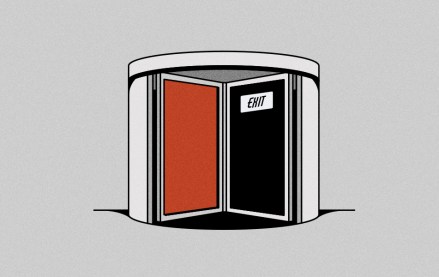Rise of alt-measurement firms shows marketers are balancing brand and performance thinking

Marketers have begun to turn back toward brand-building strategies in recent months. But that doesn’t mean they’re totally abandoning the ideas underpinning performance marketing.
One sign that’s the case is the rise of alt-measurement companies like System1, iSpot and EDO, each of which offers solutions that promise to help marketers track the impact of brand creative. Their testing solutions are used to optimize — and ultimately justify — the media and creative budgets put aside by advertisers for TV tentpole events like the Super Bowl.
Despite the turn back toward “market-leading creative” by brands such as Kimberly-Clark and Nike, marketing budgets across the industry have shrunk in recent years. Gartner’s 2024 CMO survey found that on average, marketing budgets represented 7.7% of overall company revenue, down from 10.5% in 2019. In short, marketers are pursuing brand-building strategies with weaker hands than they’ve had in previous years.
As such, improving measurement of media investment — often through media mix modeling (MMM) — is a high priority for many marketers, one that Google and Meta have sought to exploit by releasing media tracking tools like Meridian.
It’s no surprise marketers are also taking care to measure the impact of creative assets where they can. According to a December survey of over 300 U.S. marketers conducted by Advertiser Perceptions, 15% defined campaign return on investment (ROI) as “improved brand awareness and recall”, second only to a direct uplift in sales (23%).
“There is a consistent pressure in this industry to do more with less investment. Clients want to understand, how can [they] make the most out of a budget that’s either staying flat or declining,” said Laura Grover, svp, head of client solutions at EDO.
“If you [take] 1% of your media budget and put it towards measurement, you can justify the other 99%,” added Mark Myers, chief commercial officer at iSpot.
The methodologies differ — some companies make use of panel surveys or, in the case of Extreme Reach’s XRIQ tool, AI tech. The fundamental aim is the same, though: an answer to questions about which parts of their advertising output actually resonate with customers.
In System1’s case, that demand is driving its own commercial growth. In its Q3 results, released in January, year-on-year revenues increased 26% to £10.2 million ($12.89 million). The business added 230 new clients in the 2024 financial year, principally owing to demand for testing services.
As well as “a la carte” and bespoke testing options (involving larger survey samples or custom survey questions), the company offers marketers a subscription service, providing customers with access to testing data on their competitors’ ads.
Though it’s operated in the U.S. for 20 years, System1’s momentum has picked up in the last year. The company now has a team of 35 in the U.S. — 19 of whom joined in the last 12 months, while year-on-year revenue from its Test Your Ad service doubled, according to Vanessa Chin, svp of marketing.
“We are seeing brands shift back to more of a focus on brand marketing, on storytelling,” she said.
Creative agencies have employed testing techniques of their own for decades, usually prior to a campaign running. Firms like System1 and iSpot primarily offer testing before and after a campaign’s debuted, and they primarily deal with brand advertisers directly. According to iSpot’s Myer, brand clients provide 65% of the company’s annual revenue.
System1’s growth is the easiest to track, given it’s listed on the London Stock Exchange. But it’s not the only firm benefitting from increased demand for creative testing.
EDO, Extreme Reach and iSpot execs each declined to share financial details with Digiday, but pointed to increased staff headcounts and recent industry partnerships as signs of their growth. EDO’s Grover, for example, pointed to deals struck with CTV players including Netflix, Paramount and Vizeo, adding: “We’ve had a good couple of years.”
Extreme Reach, which is backed by private equity firm Gamut Capital Management, has been staffing up the team behind its XRIQ testing solution, according to Kevin O’Reilly, chief strategy officer. Last year it hired former Sling TV exec Kevin Arrix as its chief growth officer; Reilly said 150 of the company’s 1,100 staff now worked on the XRIQ product, while the core engineering and data team had doubled in the last year to an estimated 50 staffers.
Meanwhile at iSpot, headcount increased 15% in the last year (to roughly 500), according to Myers. During 2024’s upfronts season, the company signed a deal with streamer Roku, alongside The Trade Desk. It’s also expanded through acquisition in recent years; it acquired TV analytics firm 605 and invested in attention measurement business TVision following a $325 million series D funding round that saw Goldman Sachs take on a “large minority” stake in 2022, per Myers.
System1, EDO, iSpot and Extreme Reach are each betting on increased CTV investment to drive further demand. “Premium video is our focus,” said Myers.
Just under half (45%) of marketers expect to increase spending on CTV in 2025, and 42% on digital video, according to Advertiser Perceptions’ survey. And the variety of ad formats on CTV (from standard 30-second spots to shoppable units) compared with linear, as well as the potential to run more narrowly targeted creative, means each campaign has more moving parts that need to be taken into account.
In short, as spending rises, so too will marketers’ need to back up their decisions to their own CFOs.
More in Marketing

Pitch deck: How Amazon is recasting Twitch as a core part of its CTV pitch
Amazon is positioning Twitch as a defining asset in its CTV ambitions.

Netflix transforms former mall department stores into experiential venues
The location in Dallas opens this week, and one at the King of Prussia mall near Philadelphia opened last month.

Future of Marketing Briefing: AI has created a new talent paradox in programmatic agencies
The job isn’t execution anymore. AI handles that. The job is judgement.








